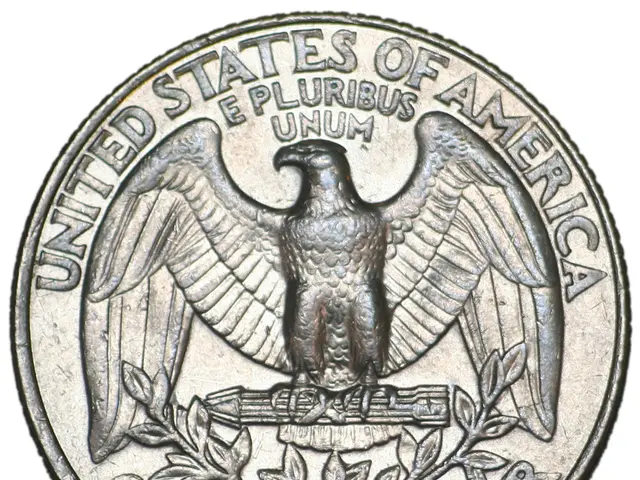Commercial Dryer Time Duration Explored in Depth
In the realm of commercial laundry facilities, the efficiency of dryers plays a crucial role in cost and energy management. Here are some key factors that influence the performance of these essential appliances.
Airflow Quality and Components
The heart of any efficient dryer lies in its airflow system. Proper airflow, managed by components such as blowers/fans, ventilation ducts, and lint filters, ensures even heat distribution, prevents overheating, accelerates drying time, and improves energy efficiency. Blocked or restricted airflow leads to longer drying times, damp clothes, and higher energy consumption.
Dryer Type and Technology
When it comes to energy efficiency, heat pump dryers stand out. These modern machines recycle heat through a heat exchanger, drying clothes gently at lower temperatures, which reduces energy use and drying time.
Operating and Ambient Temperatures
The temperature of the air entering the dryer and the ambient temperature around the dryer also impact efficiency. In air dryers (used in compressed air systems), the dew point temperature and inlet air temperature are critical. Dryers must maintain inlet temperatures and dew points appropriate for their environment to avoid inefficiency or moisture condensation.
Maintenance of Components
Regular cleaning of filters, vents, and airflow paths prevents blockages, maintaining optimal airflow and preventing energy waste and longer dry cycles.
Dryer Capacity and Load Size
Matching dryer capacity to the amount of laundry affects drying time and efficiency. Overloading restricts airflow and prolongs drying, while underloading wastes energy.
Ventilation and Fire Safety
A clean, properly installed venting system ensures that moist, hot air is effectively expelled from the dryer, allowing for fresh, dry air to circulate and continue the drying process. Proper ventilation is critical for efficient dryer operation, and regular vent cleaning is essential for maintaining dryer efficiency and preventing fire hazards.
Energy-Saving Features
Investing in energy-efficient dryers can help save money on energy bills. Look for models with features like high-efficiency burners, insulated drums, and advanced airflow systems. Modern commercial dryers may also have sensor-based drying systems that automatically adjust the cycle duration based on moisture levels, preventing over-drying and saving energy. Energy-saving features such as sensor-based drying and low-heat settings can help reduce energy consumption. Sensor-based drying automatically adjusts the cycle duration based on moisture levels, preventing over-drying and saving energy. Low-heat settings are ideal for delicate fabrics.
Maintaining Efficiency
Regular maintenance, including cleaning, lubrication, and component replacement, can help keep commercial dryers running efficiently and prolong their lifespan. Implementing a regular maintenance schedule can help keep commercial dryers running efficiently. This includes cleaning the lint trap after each load, inspecting and cleaning the vent regularly, and addressing any mechanical issues promptly.
In conclusion, optimal airflow and ventilation, dryer technology (such as heat pump systems), appropriate operating temperature conditions, proper maintenance, and correct load sizing are the main factors influencing the efficiency and drying time of commercial dryers. By focusing on these aspects, laundry facilities can reduce energy consumption, lower utility bills, and ensure consistent drying times, contributing to a more cost-effective and sustainable laundry operation.
[1] Energy Star. (2021). Commercial Dryers. Retrieved from https://www.energystar.gov/products/appliances/clothes_washers_dryers/commercial_dryers
[2] U.S. Department of Energy. (2021). Commercial Dryers. Retrieved from https://www.energy.gov/energysaver/commercial-dryers
[3] Heat Pump Dryers. (2021). Retrieved from https://www.heatpumpdryers.com/
[4] HVACR Learning Center. (2021). Dryer Vent Cleaning. Retrieved from https://www.hvacrlearningcenter.com/dryer-vent-cleaning/
[5] National Fire Protection Association. (2021). NFPA 86: Standard for Solid Fuel-Fired Ovens and Ranges. Retrieved from https://www.nfpa.org/codes-and-standards/all-codes-and-standards/list-of-codes-and-standards?term=nfpa%2086
Data-and-cloud-computing systems could be utilized to optimize the performance of commercial laundry facilities by monitoring and analyzing various factors such as dryer efficiency, energy consumption, and maintenance schedules.
Advances in technology, particularly in the field of dryer technology like heat pump systems, can lead to improved energy efficiency and cost savings in laundry facilities.




